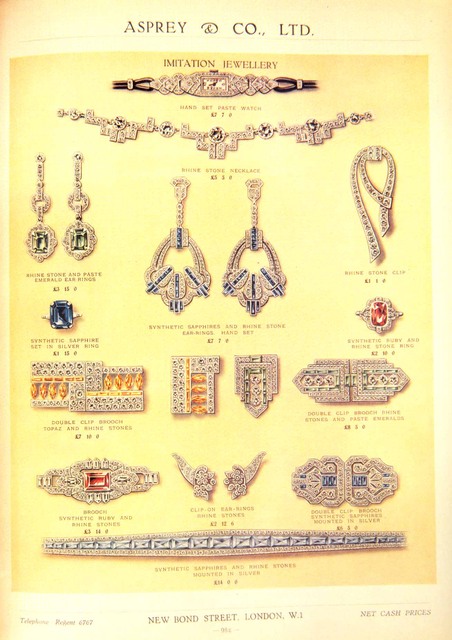Pinkcoke
Alumni
On vintage men's cuff links, tie bars/clips, studs etc. I see a lot of the time the 'Imitiation' marking being referred to as Imitations of Stratton designs but I've recently come to the conclusion it must mean something else.
Seeing Gayle's old listing for english collar studs for example (hope you don't mind Gayle )- the original card marked Gilt Imitation Jewellery made me think was it to state that they were 'costume' jewellery rather than precious jewellery, in which case, would this mean a piece marked Stratton Imitation, is not, as I would have thought, an imitation of a Stratton design, (which has never made sense to me, why would you name the brand you were copying?) but a genuine Stratton design, albeit a 'costume' piece?
)- the original card marked Gilt Imitation Jewellery made me think was it to state that they were 'costume' jewellery rather than precious jewellery, in which case, would this mean a piece marked Stratton Imitation, is not, as I would have thought, an imitation of a Stratton design, (which has never made sense to me, why would you name the brand you were copying?) but a genuine Stratton design, albeit a 'costume' piece?
Seeing Gayle's old listing for english collar studs for example (hope you don't mind Gayle
 )- the original card marked Gilt Imitation Jewellery made me think was it to state that they were 'costume' jewellery rather than precious jewellery, in which case, would this mean a piece marked Stratton Imitation, is not, as I would have thought, an imitation of a Stratton design, (which has never made sense to me, why would you name the brand you were copying?) but a genuine Stratton design, albeit a 'costume' piece?
)- the original card marked Gilt Imitation Jewellery made me think was it to state that they were 'costume' jewellery rather than precious jewellery, in which case, would this mean a piece marked Stratton Imitation, is not, as I would have thought, an imitation of a Stratton design, (which has never made sense to me, why would you name the brand you were copying?) but a genuine Stratton design, albeit a 'costume' piece?